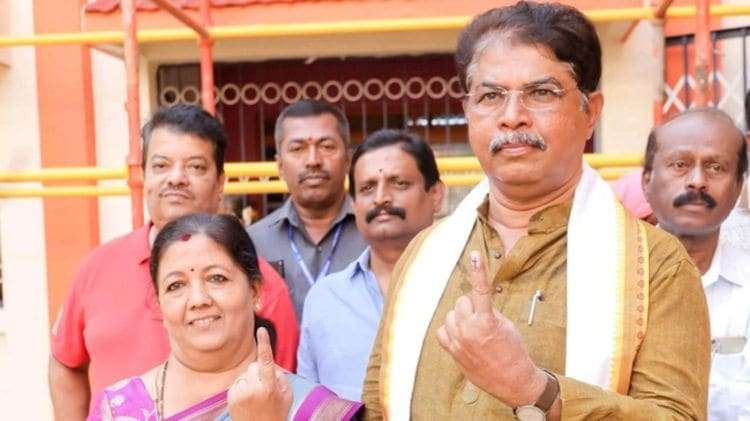
Bengaluru News Live Updates: Karnataka Records 9.21% Voter Turnout
Bengaluru News Live Updates: Karnataka Records 9.21% Voter Turnout; Highlights from Dakshina Kannda to Chamarajanagar and Mandya
In the democratic fabric of India, elections serve as a cornerstone of citizen participation and governance. As Karnataka gears up for its electoral process, live updates on voter turnout are essential to gauge civic engagement and political enthusiasm across the state. Today’s Bengaluru News Live Updates bring attention to Karnataka’s recent voter turnout, revealing fascinating insights from regions like Dakshina Kannda to Chamarajanagar and Mandya. Let’s delve into the latest developments and trends shaping the electoral landscape in Karnataka:
Karnataka Lok Sabha Elections 2024: Schedule, phase, seats, candidates and all you need to know about Karnataka General Elections:
The state of Karnataka consists of a total of 28 Lok Sabha seats, which can play a major role in claiming majority in the upcoming elections, and with local parties JD(S) gaining the popularity in the recent times, national parties like BJP and Congress, need to put in a fair amount of work in order take the win in the state. Karnataka being one of the fastest growing economies in the country because of its strong IT hub, makes it difficult for parties like BJP and INC, who are facing anti-incumbency situation in the state. The election results may be influenced by voters’ discontent with how things are being handled on subjects like corruption, unemployment, and inflation.
Karnataka Records 9.21% Voter Turnout:
According to recent reports, Karnataka has recorded a voter turnout of 9.21% in the ongoing elections. This statistic reflects the active participation of citizens in exercising their democratic rights and shaping the future of the state through the ballot box. As voters cast their ballots in polling booths across Karnataka, the electoral process unfolds with fervor and anticipation.
Highest Voter Turnout in Dakshina Kannda:
Dakshina Kannda district emerges as a frontrunner in voter turnout, witnessing robust participation from its residents. Known for its scenic beauty and vibrant culture, Dakshina Kannda showcases the democratic spirit of its people, who are eager to contribute to the electoral process and voice their opinions on matters of governance and representation.
Lowest Voter Turnout in Chamarajanagar, Mandya:
Conversely, Chamarajanagar and Mandya districts report the lowest voter turnout in Karnataka, highlighting unique challenges and factors influencing civic engagement in these regions. Despite efforts to mobilize voters and raise awareness about the importance of voting, these districts grapple with lower-than-average turnout rates, signaling the need for targeted outreach and engagement strategies.
Karnataka Lok Sabha Election Voting 2024 Live Updates:
Voting for the second phase of the 18th Lok Sabha elections kicked off in Karnataka on Friday at 7 am and is set to conclude by 6 pm. The voter turnout recorded at 9 am stood at 9.21 percet overall with Dakshina Kannda noting the highest turnout with over 14 percent, and Chamarajanagar and Mandya noting the lowest with 7.70 percent each. Among the early voters that queued up in front of polling booths to exercise their franchise were Finance Minister Nirmala Sitharaman, author Sudha Murthy, actor Prakash Raj, leader of opposition in Karnataka Legislative Assembly R Ashoka, Housing and Minority Welfare Minister Zameer Ahmed Khan, and Chief Electoral Officer Manoj Kumar Meena.

Number of polling booths, security teams and more:
A total of 30,602 polling booths, including 25 auxiliary booths, have been established, with approximately 1.40 lakh polling officers, 5,000 micro observers, and 50,000 civil police deployed alongside 65 companies of CRPF and Reserved Armed Forces from other states at the 30,602 polling stations.
Importance of Voter Education and Awareness:
Amidst the diversity of voter turnout rates in Karnataka, the role of voter education and awareness becomes paramount. Empowering citizens with knowledge about their voting rights, electoral procedures, and the significance of participating in elections fosters a culture of informed and responsible citizenship. Through initiatives such as voter awareness campaigns, civic education programs, and outreach efforts, stakeholders can encourage greater participation in the electoral process.
Future Implications:
The voter turnout trends observed in Karnataka carry implications for the state’s political landscape and governance dynamics. High voter turnout in certain regions may influence electoral outcomes and shape the priorities of elected representatives. Conversely, lower turnout rates in specific districts underscore the importance of addressing barriers to participation and promoting inclusivity in the electoral process.
Conclusion:
As Karnataka experiences the electoral exercise, Bengaluru News Live Updates offer a window into the state’s voter turnout dynamics, from the highest levels in Dakshina Kannda to the lowest in Chamarajanagar and Mandya. By tracking voter participation trends and analyzing underlying factors, stakeholders can gain valuable insights into the state’s democratic ethos and work towards fostering greater civic engagement and representation for all citizens of Karnataka.

